What is weedy rice?
Weedy rice, also known as red rice, is a plant that belongs to the same genus and species as cultivated rice. In other words, it is a very close relative of cultivated rice. Because of this, the herbicides we use in rice do not kill it.
Why is weedy rice a problem?
Weedy rice is one of the most damaging weeds of rice worldwide. It can affect yield and quality significantly. Reports from the southern US show that yields can be reduced by 60%.
How extensive is the weedy rice problem in California?
California was practically free of weedy rice for the past 50 years but the weed has recently resurfaced. By 2021, over 3000 acres have been found infested.
What should I do if I suspect I have weedy rice in my field?
Follow the identification guidelines in this handout to rule out weedy rice.
Identification
The following are the weedy rice types indentified in California so far:
Click the images to learn more
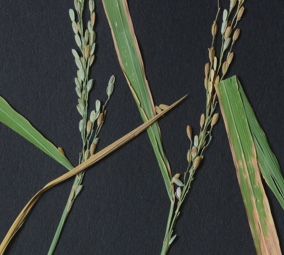
Type 1
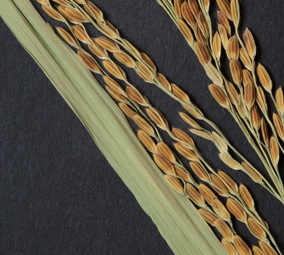
Type 2
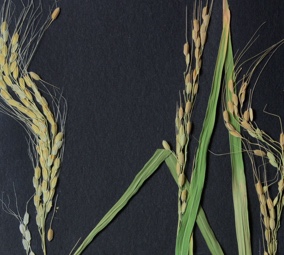
Type 3
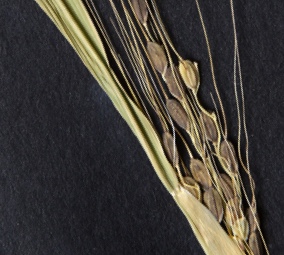
Type 4
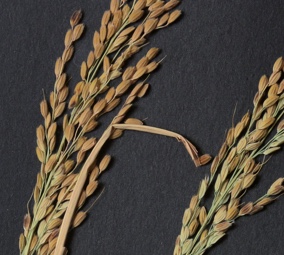
Type 5
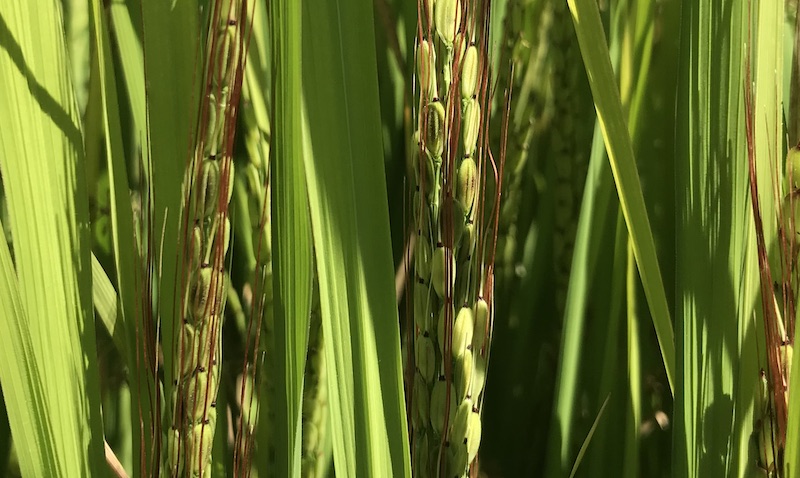
Type 6
Prevention and Management
Weedy rice (aka red rice) is a major problem in rice production in many parts of the world, and is found infesting over 3000 acres, as of 2021. Once weedy rice is established in a field, it is very difficult to eradicate since weedy rice plants cannot be controlled with rice herbicides. Furthermore, weedy rice seeds can survive for a long time in the soil, meaning that eradication measures become more difficult if plants are allowed to produce seed. Yield reductions in the southern US are as high as 60% in weedy rice infested fields. If weedy rice contaminates other rice during drying and storage, extra milling and sorting is required, which increases costs and may cause cracking and reduce milling yields.
Weedy Rice Identification Guidelines
Once all watergrass herbicide applications have been made, inspect surviving watergrass-like plants to rule out weedy rice. Check the collar to see if there is a ligule and auricle.
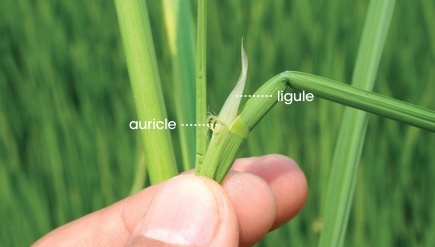
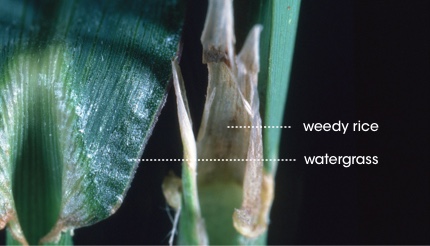
If ligule and auricle are absent, then the plant is watergrass.
If ligule and auricle are present, then the plant is rice or weedy rice.
If a plant looks suspicious, contact a UCCE Farm Advisor to confirm the identification. If the identification is positive, follow the best management practices developed by UCCE.
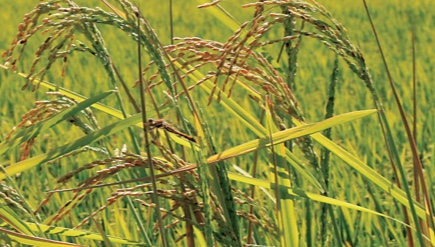
Guidelines to prevent infestations
Equipment
All equipment coming into California from areas known to have weedy rice infestations must be thoroughly cleaned and inspected by the County Agricultural Commissioner.
Planting
Only use certified seed or seed produced in the Quality Assurance Program.
Guidelines to manage weedy rice in your field
During the Season
- Before heading, rogue weedy rice plants from the field, or cut the plants at the base below the water line. If plants have headed,cut off the seed heads into a bucket or bag to prevent seed shattering.
- Bagged seed heads should be disposed of in a landfill. Do not leave them by the side of the field.
- Keep water on the field with no drainage until harvest.
At Harvest
- Do not use a stripper header, as it tends to drop a lot of seed onto the soil surface.
- Harvest infested fields last. Make sure you do not contaminate other fields by moving equipment from an affected field to a clean field.
Winter Management
- If possible, burn straw in affected field. Straw should be cut as low as possible to the ground to facilitate burning.
- Do not perform fall tillage as this may bury weedy rice seed.
- Flood infested fields for as long as possible.
Long Term Management
- Fallow infested basins or fields. Apply flush irrigation in the spring and summer to geminate weedy rice seeds. Use a burn down herbicide or tillage to kill emerged plants.
- Crop rotation, if possible, allows for the use of herbicide modes of action which are not available in rice.
Sample Collection
To minimize the movement of weedy rice seed, plant material and contaminated soil, the University of California, in coordination with the California Rice Research Board and California Rice Commission, will be implementing the following weedy rice sample collection protocol, effective 2017.
PLEASE NOTE: AS OF 2017, NO SAMPLE SUBMISSIONS WILL BE ACCEPTED AT THE RICE EXPERIMENT STATION
1) Detain Transportation
Suspected weedy rice seed, plant material and soil should not be transported out of the possibly contaminated field.
2) Contact UCCE Rice Farming Systems Advisors:
If a suspected plant is found, contact one of the UCCE Rice Farming Systems Advisors:
Sacramento Valley:
Whitney Brim-DeForest (530-822-7515)
Luis Espino (530-635-6234)
San Joaquin Valley:
Michelle Leinfelder-Miles (209-953-6120)
The Advisor will visit the field, and if necessary, take a leaf or seed sample, depending on the timing and maturity of the plants. Growers and Pest Control Advisers do not have to be present in the field for collection.
3) Submitter Recieves Status
The status of the sample (whether or not it is weedy rice) will be given to the submitter as soon as identification is confirmed.
Publications
Storymap
Handouts
- UCCE Weedy Rice Identification Guide
- Best Management Practices for Weedy Rice
- California Weedy Rice Sample Protocol 2023
Presentations
- 2021 Weedy Rice Survey
- 2019 Weedy Rice Workshop: Luis Espino, UCCE
- 2019 Weedy Rice Workshop – Research Update: Whitney Brim- DeForest, UCCE
- 2019 Weedy Rice Workshop – Seed Certification and Quality Assurance Programs: Timothy Blank, Crop Improvement
- 2019 Rice Grower Meetings: Whitney Brim-DeForest, UCCE
- 2018 Rice Grower Meetings: Whitney Brim-DeForest, UCCE
- 2017 Rice Grower Meetings: Whitney Brim-DeForest, UCCE
- 2016 Rice Grower Meetings: Timothy Blank, Crop Improvement Association
Research Papers
Weedy Rice Update E-Newsletters
To receive the latest updates on the weedy rice situation in California, subscribe to our electronic newsletter Weedy Rice Update
subscribePrevious issues
Contact
UCCE Rice Advisor
Sutter, Yuba, Placer,
Sacramento, Butte
(530) 822-7515